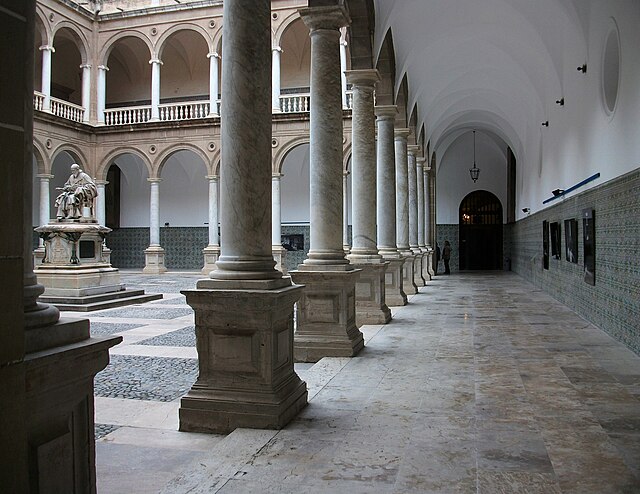A pedestal or plinth is a support at the bottom of a statue, vase, column, or certain altars. Smaller pedestals, especially if round in shape, may be called socles. In civil engineering, it is also called basement. The minimum height of the plinth is usually kept as 45 cm. It transmits loads from superstructure to the substructure and acts as the retaining wall for the filling inside the plinth or raised floor.
Cloister of Real Colegio Seminario del Corpus Christi, Valencia, showing a colonnade with pedestals
Lotus throne under the Hindu goddess Parvati, 11th century, India
Image: RUS 2016 SPB Monument to Nicholas I of Russia
Image: Александровская Колонна. Основание. IMG 0835WI
A statue is a free-standing sculpture in which the realistic, full-length figures of persons or animals are carved or cast in a durable material such as wood, metal or stone. Typical statues are life-sized or close to life-size; a sculpture that represents persons or animals in full figure but that is small enough to lift and carry is a statuette or figurine, whilst one more than twice life-size is a colossal statue.
Statue of Unity (2018), the world's tallest statue, Gujarat, India
Hermes and the Infant Dionysus by Praxiteles, 4th century BC, Archaeological Museum of Olympia, Greece
Urfa Man, in the Şanlıurfa Museum; sandstone, 1.80 metres (5 ft 11 in) c. 9,000 BC
Michelangelo's David, 1504, The Accademia Gallery, Florence, Italy








